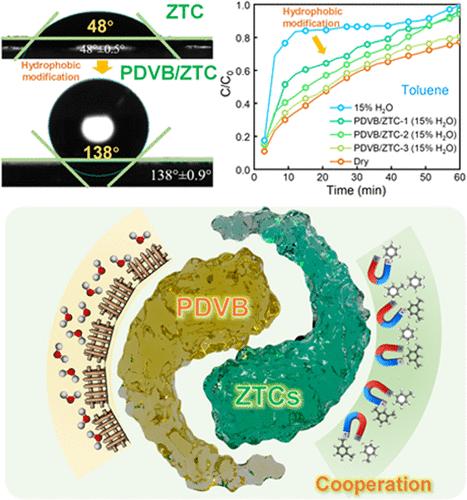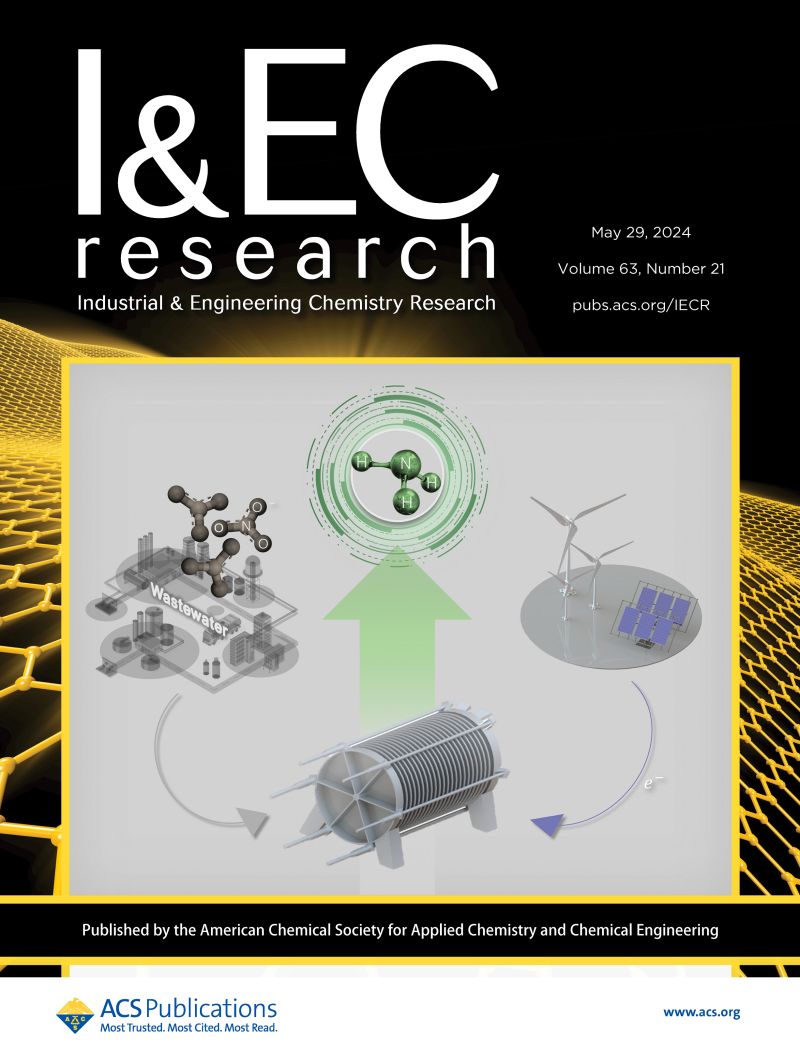Interfacial Modulation Strategy for Constructing a Hydrophobic Surface on Zeolite Template Carbon to Enhance VOCs Removal in High-Humidity Coal Flue Gas
IF 3.9
3区 工程技术
Q2 ENGINEERING, CHEMICAL
引用次数: 0
Abstract
Emissions from coal-fired or biomass power plants are often released under conditions of high-humidity, posing significant challenges to the effectiveness and durability of adsorbents and catalysts. In industrial settings, adsorbents and catalysts are often deactivated due to water presence, which can block active sites and reduce their effectiveness. Traditional hydrophobic modification methods often cover these adsorption sites, thus reducing a material’s adsorption capacity for volatile organic compounds (VOCs). In this study, we propose a mild physical blending method, incorporating hydrophobic polymer poly(divinylbenzene) (PDVB) with zeolite-templated carbon (ZTC), to regulate the local environment of ZTC for capturing VOCs under humid conditions without damaging the chemical structure of ZTC. Numerous characterization results confirm that incorporating PDVB does not affect the structure of ZTC. The hydrophobic modification increased the adsorption capacity of ZTC by 205% at 15% water content, while the water contact angle increased from 48 to 138°. Vinyl and phenyl groups in PDVB facilitated the rapid repulsion of water molecules from the surface. Molecular dynamics simulations indicated that the hydrophobic channels promoted the desorption of water molecules, and the number of escaped water molecules increased by 286%. Additionally, we propose an industrial application model for large-scale gas emissions with low-concentration VOCs under humid conditions, which enables simultaneous adsorption and desorption, thereby enhancing operational efficiency.

在沸石模板碳上构建疏水表面以增强高湿煤烟气中VOCs去除的界面调制策略
燃煤或生物质发电厂的排放物通常在高湿度条件下释放,对吸附剂和催化剂的有效性和耐久性提出了重大挑战。在工业环境中,吸附剂和催化剂通常由于水的存在而失活,这可能会阻塞活性位点并降低其有效性。传统的疏水改性方法通常会覆盖这些吸附位点,从而降低材料对挥发性有机化合物(VOCs)的吸附能力。在本研究中,我们提出了一种温和的物理共混方法,将疏水性聚合物聚二乙烯基苯(PDVB)与沸石模板碳(ZTC)混合,在不破坏ZTC化学结构的情况下,调节ZTC在潮湿条件下捕获VOCs的局部环境。大量表征结果证实,加入PDVB不会影响ZTC的结构。疏水改性使ZTC在15%含水量下的吸附量提高了205%,水接触角从48°增加到138°。PDVB中的乙烯基和苯基促进了水分子从表面的快速排斥。分子动力学模拟表明,疏水通道促进了水分子的脱附,水分子的逃逸量增加了286%。此外,我们提出了在潮湿条件下大规模低浓度VOCs气体排放的工业应用模型,该模型可以同时进行吸附和解吸,从而提高操作效率。
本文章由计算机程序翻译,如有差异,请以英文原文为准。
求助全文
约1分钟内获得全文
求助全文
来源期刊

Industrial & Engineering Chemistry Research
工程技术-工程:化工
CiteScore
7.40
自引率
7.10%
发文量
1467
审稿时长
2.8 months
期刊介绍:
ndustrial & Engineering Chemistry, with variations in title and format, has been published since 1909 by the American Chemical Society. Industrial & Engineering Chemistry Research is a weekly publication that reports industrial and academic research in the broad fields of applied chemistry and chemical engineering with special focus on fundamentals, processes, and products.
文献相关原料
公司名称
产品信息
阿拉丁
azobis(isobutyronitrile) (AIBN)
阿拉丁
Divinylbenzene (DVB)
阿拉丁
azobis(isobutyronitrile) (AIBN)
阿拉丁
Divinylbenzene (DVB)
 求助内容:
求助内容: 应助结果提醒方式:
应助结果提醒方式:


